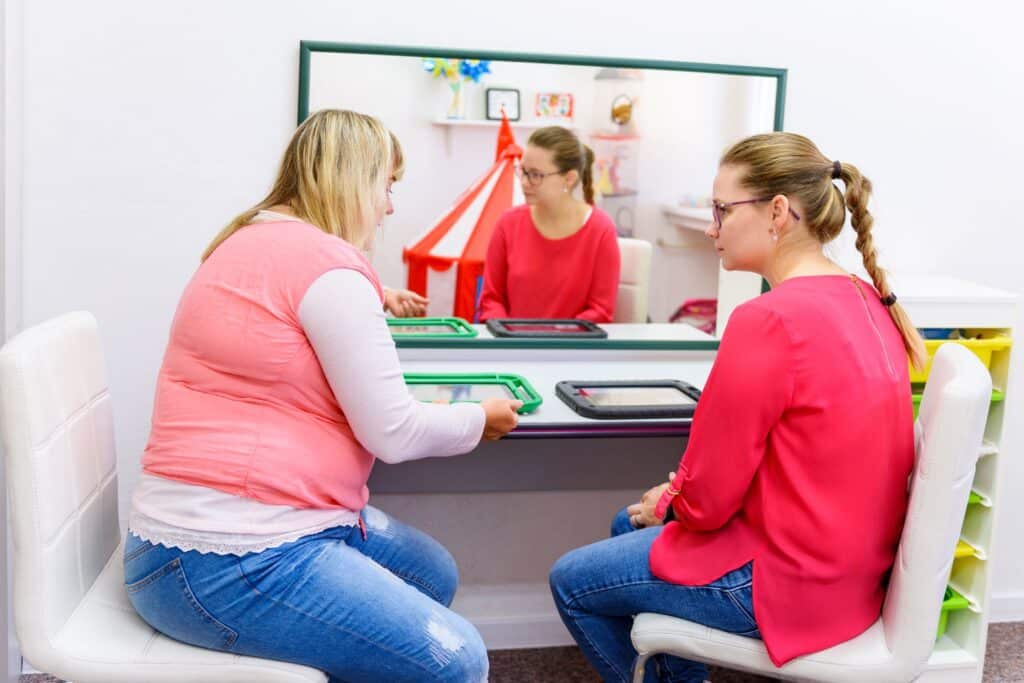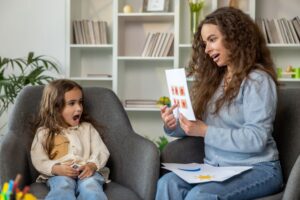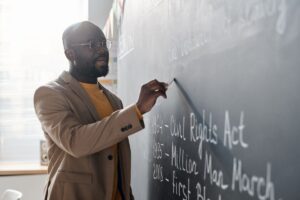What is Augmentative and Alternative Communication (ACC)?
As we navigate through that field of special education, communication, and the importance of our students being able to communicate with anyone they come into contact with is always of great importance. Students with severe speech and language difficulties may need to find other ways to communicate besides talking.
Many types of augmentative and alternative communication (AAC) can be used to best assist our students. The best news is that our schools are equipped to help our students with communication, and our speech and language pathologist can be sure that supports are in place for our students to be successful.
When you hear the term “AAC” in short, this refers to all of the ways that someone communicates besides talking. Students of all ages can use AAC to help enhance and support concerns with their speech or language skills. Augmentative and alternative can sometimes be used interchangeably. When discussing both it is important to know the difference.
Augmentative is when a device adds to someone’s speech. Alternative has a different meaning and is when a device is used instead of speech. Some people use AAC throughout their entire life due to their lack of ability to speak. Others may use AAC only for a short time, when something may impact their ability to communicate, such as a surgery, accident, or some type of life event that leaves them impaired for a short period of time.
How is ACC Beneficial for Special Education Students in Schools?
As educators, we are responsible for ensuring that we are doing our very best to meet all our students’ needs. It is extremely important that students who are diagnosed with having complex communication needs, are provided with the opportunity to communicate and get the best education possible, all the while being part of the fun activities that take place in school. We must not overlook that socializing with other peers is a big part of school.
It is important that participating in a wide range of activities during their school day occurs, just like any other student has the opportunity to take part in. Augmentative and alternative communication can enhance and help facilitate the development of verbal communication for our students.
There is a possibility that at times it may be a short-term option for some students to support their communication, while their verbal skills can continue to develop and improve. For some of our other students, speech may never develop over time, and they may always need some type of device.
In order for educators to fulfil their students communication needs effectively for our students, AAC provides an alternative way of getting all of their communication needs met while they use this throughout their life. Why we navigate through what source of communication device is best for our students, it is important to remember that speech is only one way of communicating.
With the right systems that are in place, students who have do experience limited communication or no verbal ability can still be effective communicators. Throughout this process, we must be sure that our IEP (Individualized Educational Plan) team is working hard to address communication needs.
A speech and language pathologist (SLP) can be a great asset in helping parents understand what augmentative and alternative communication devices are needed and how to get the support their child needs. Not only can a SLP help in finding the most effective device, but they also can help parents, students, and educators, learn how to use augmentative and alternative communication to communicate. When finding a device, it is important to be mindful that it is not a “one size fits all” approach.
Not every tool works for every person, so it is important to find the right one. SLP’s also have the connection to work with other professionals like occupational therapists and physical therapists if students have different physical skills that affect how students access their AAC system. A student’s medical insurance covers some AAC tools, but some are not. The SLP can help parents understand their options and walk them through the entire process.
As educators, it is important to be mindful of knowing what options are available and is most appropriate for our students. While it may be easiest to focus on one device, choosing just one device to suit everyone in a classroom is not recommended. Unfortunately, one device doesn’t consider each student’s individual needs. Just as an IEP is individualized for our student’s education, so should their communication device.
In our classroom, a student’s augmentative and alternative communication device should always be available in all classroom activities and instruction. Teacher’s often do not realize that they are modeling key concepts for our students. By doing this on a student’s AAC this supports their overall receptive language skills. As long as we continue to use the device in meaningful ways in our classrooms, we will enhance our student’s communication experiences.
While we know the importance of devices and communication, it is important to remember that learning to read and write is also very necessary for our students with communication needs. Many students with AAC devices make use of the alphabet to help clarify our spoken message. This would allow the students to spell out any words that they are having difficulty with.
They may also use their writing skills to prepare longer messages that are difficult for them to say out loud if their speech is limited. As our students use augmentative and alternative communication and learn to read and write, they should have access to frequently used words as well as the alphabet to spell words easily and quickly. In an educator’s mind, this would be the equivalent to our classrooms that have word walls available to our students.
It is important to remember that communication is a two-way process. As educators, we should all of the proper training and knowledge to assist our students who have communication needs. We all play an important role in helping our students be successful and learning what means of communication is most effective for our students, and using this daily is more beneficial than we could ever imagine. Not only is this our responsibly, but it is for the sake of our students who are well worth it!
A graduate degree in special education builds expertise in research, instructional design, individualized education program (IEP) development and behavioral management. Check out our available special education graduate programs here!




